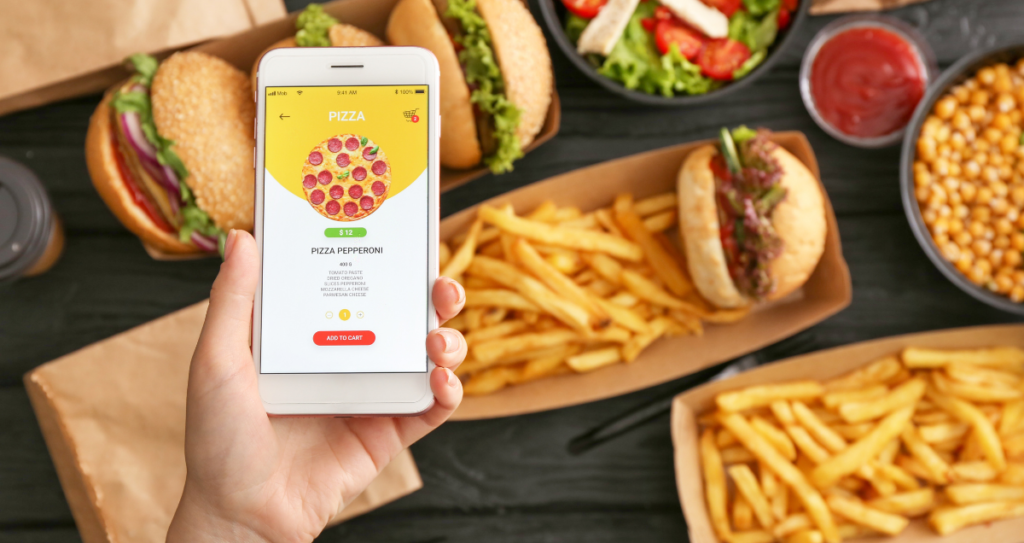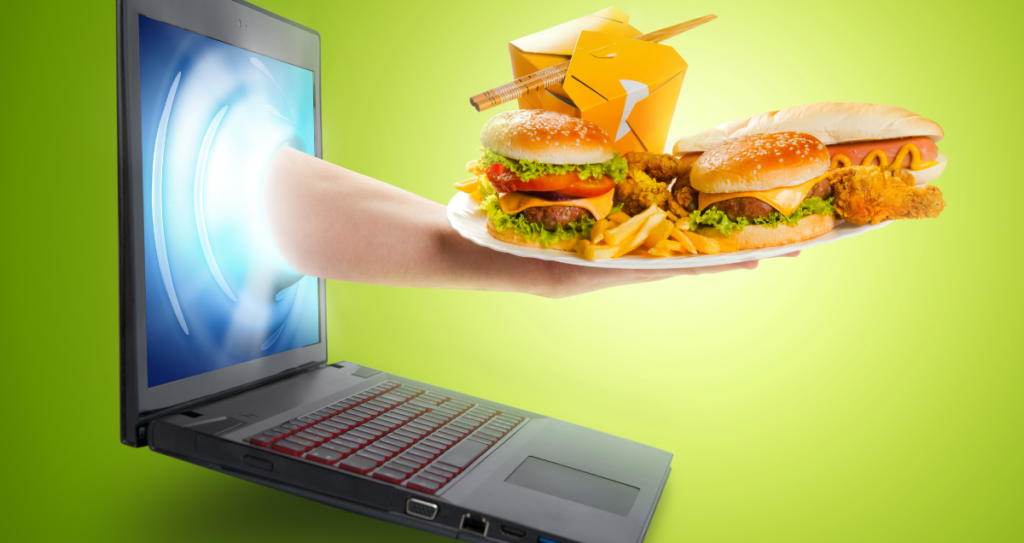
- Products
- Solutions
- Learn
- Partner
- Try Now
It is often said that the more you know, the more you experiment, the more you can create as there’s no end to imagination when it comes to the kitchen. Cloud Kitchen, popularly known as the Virtual Dining concept, has actually proved that when it comes to the kitchen, it’s not only the food but also the operational facets of kitchens where creativity has no bounds. A sort of creativity where too many cooks don’t spoil the broth. Rather they bring out the best for everyone.
Crux of Cloud Kitchen/ Virtual Dining Concept
Dark kitchen or shared kitchen or satellite kitchen or virtual restaurant or ghost kitchen, call it what you want, essentially, they all are synonyms of ‘Cloud kitchen.’ Basically, the cloud kitchen or virtual dining refers to the only delivery format of a restaurant that accepts orders online or via telephone and doesn’t provide any dine-in facility. Customers have the liberty to order via online menus, which reach their doorstep to food delivery workers. The thread binding all this process is nothing but the virtual dining concept. The dining concept helps you optimum utilization of existing underutilized kitchens by leveraging enhanced customer demand for food delivery.

Trends in the food industry
Ever since food got married to tech, it has brought skyscraping returns along with it. The global cloud kitchen size in the market was valued at around 43 billion dollars in FY 2019. And it was anticipated to grow at a CAGR of 12%, making it to a striking market size of 71 billion dollars by 2027. The food-tech industry has witnessed an overall gross merchandise value growth of about 140% in the previous year, with an astounding 176% increase in orders. The ever-increasing momentum in on-demand food delivery has been fueling the F&B industry.
What makes Cloud kitchen/ Virtual Dining Concept attractive
- Unlike conventional business formats like takeaway restaurants or dine-in restaurants prevalent in this industry, cloud kitchens require lesser investment. With a cloud kitchen software, you can economize your CAPEX and OPEX costs.
- Cloud kitchens are famous for the low risk and high return opportunities they provide
- Cloud kitchens are surely a product of an inventive mind. Still, they, too, have set the ball of innovation rolling as it enables restaurateurs to continue doing experiments with various formats and concepts, which has, in turn, brought a lot of variety in this business.
- Food delivery dedicated startups even come forward to provide readymade kitchens for food entrepreneurs to lay the foundations of their own food brands. They also assist with end-to-end logistics.
- With the advent of the cloud kitchen, there’s a lesser requirement of staff, equipment, and other essentials, making this idea a very lean operation.
- With cloud kitchens, break-even can be achieved quickly.
- With the virtual dining concept, you have to worry less about other irrelevant issues and focus more on food. Thus, you can unleash the creative soul inside you and provide the best to your customers.
- When tech enters into this domain, collecting customer data becomes easier. You can not only understand and work according to the preferences of your customers well but also reward your loyal ones and build impressive customer relationships

Types of cloud kitchen business model
Following are some of the most widely accepted and prevalent cloud kitchen business models:
- Shared kitchen spaces: Famously known as the commissary kitchen, it is a large coworking cloud kitchen infrastructural space where multiple brands can occupy by paying rent and operate alongside. These spaces have individual units dedicated to each brand. These cloud kitchen spaces are intentionally located at delivery right strategic locations where there is high customer demand. The cloud kitchen spaces sometimes extend utilities and equipment and training and consulting services to businesses.
- Virtual restaurants: This essentially operates within the existing restaurants. Though they capitalize on the existing restaurant’s existing physical infrastructure and resources, they operate under a different brand name via getting listed on online food aggregators. The virtual brand has the opportunity to have a menu that’s completely dissimilar from the existing menu and thus experiment endlessly.
- Aggregator managed cloud kitchens: These are just like shared kitchen spaces, the only difference being that they are operated by online food aggregators like Swiggy, Zomato, etc. This model is famously known as ‘shell’ in this business. The aggregator invites their best delivery partners to come and utilize these kitchens. However, these kitchens are open to new players too, and not just the established ones. The associated restaurateurs get to benefit from the online ordering system, menu intelligence, and a delivery fleet of the aggregator.
- Standalone or single brand cloud kitchens: This is the most pristine cloud kitchen business model. A single brand with a single kitchen and with no storefront. This is essentially a restaurant with no seating space or physical store. This restaurant exists in the digital form and operates there itself. Typically, they have a small menu and are based on a single theme.
- The operator managed cloud kitchens: This is one of the easiest ways to increase the cloud kitchen business’s size. It is more of a virtual franchising model where the kitchen operator runs and manages the brand’s operations. The brands receive orders from the operator’s website or other resources, but they also can get listed on other online food aggregators. The restaurants can outsource everything from menial operations to kitchen and delivery.
- Multi-brand cloud kitchens: This model is nothing but serendipity for the company that is looking for expansion. This cloud kitchen business model enables the restaurant operators to operate multiple company brands in a large kitchen infrastructure utilizing the same inputs. These brands cater to different segments, and mostly the customer groups are segmented basis cuisines. The huge size and the diversification give them an added advantage as they have multiple listings on the aggregators, which boosts their audience reach.

Benefits of cloud kitchen
- Lower startup cost: Cloud virtual kitchens help food businesses save money. Leasing a commercial kitchen from a ghost kitchen supplier lowers startup costs because food enterprises no longer have to invest in building inspections, costly building construction, zoning compliance, and so on. Cloud kitchens can allow food businesses to get up and running in a matter of days or weeks, rather than the months or years required for typical leases or construction financing.
- Added convinience: Consider running a food business and being able to concentrate only on your customer and food product. This is made feasible by ghost kitchens! The following administrative responsibilities are frequently handled by ghost kitchen suppliers so that you do not have to: i) health inspections; ii) equipment repairs; iii) cleaning services; iv) security monitoring; v) property taxes; and vii) utility bills.
Also Read
Story of a cloud kitchen business which went from 2 lakhs to 135 crores
- Better delivery experience: Do you have a physical, brick and mortar restaurant that is essential to your brand? Cloud kitchens enable you to grow your brand by enabling delivery from a single location and enhancing revenue streams. Cloud kitchens enable your physical restaurants to meet increased demand without overburdening kitchen workers with online food delivery requests.
- Boost in reach: Cloud kitchens enable your company to broaden its focus on meal delivery and reach a broader audience. Delivery-optimized restaurants promote their services via delivery apps and social media, rather than through more limited marketing methods. Cloud kitchens can help your company grow by establishing new marketing channels and increasing visibility.
- Lower overhead: Traditional restaurant owners have battled to stay viable owing to hefty property taxes, costly employee salary, and annoying upkeep fees. Cloud kitchens take care of these costly and time-consuming administrative tasks. Restaurants in cloud kitchens frequently employ one to two cooks and share joint expenses with other tenants.
What is required to start a cloud kitchen business
- Strategic location: Cloud kitchen business is a low-cost affair. What can help you differentiate yourself from others and establish yourself as a strong player is a location. With cloud kitchens, you need not worry about customer footfall. Still, you need to have a location where you have all the essential utilities and a demographically favorable customer segment to cater to. The place needs not to be highly accessible as customers won’t step in. It just needs to be placed between customers from where high demand comes and operationally and logistically right for you to deliver at your best.
- Licenses: Customers don’t come and see what your place is like, so they might always be skeptical about the standards you maintain. Thanks to the licenses, you can help you speak for the high standards and hygiene you maintain. These licenses will also prevent you from landing into legal hassles. Licenses like FSSAI license, fire licenses, trade licenses, GST registration, etc., would require getting started with your business.
- Point of sale technology: You can have a swarm of orders coming in, but it will all go waste if there’s no proper system put in place for a systematic acceptance of those orders. Also, since there are multiple avenues from where orders come in, it becomes important to keep track of those and do detailed reporting for butter-smooth functions. Point of sale software is what can help you do the same.
- Equipment & packaging: The items you deliver would decide the kind of equipment you require. The packaging is also a crucial issue that is to be taken care of. Not only does it keep the food safe and fresh for consumption, but it talks a lot about you as a service provider. So, pay heed to how you package your food because that translates into how you do business.
- Staff: This decision would be based on the size of your business. You would need to decide how many chefs, helpers, or other sorts of employees you would require depending on your food items and your business model. It is recommended to start with a small army of staff and then increase the size if warranted. Mostly, cloud kitchens work with small staff size.
Some handy tips
- Don’t think that you will have to build, and customers will come. They are busy, and they are spoilt for choice. So, make sure you lure them with spots on marketing plans and actions.
- Every business model and every business would translate into a very different budget. So, indulge in proper financial planning. You might also have to tackle a lot of trade-offs as well. Do the analysis yourself and avoid under or overestimation of costs.
- Maintain a balance between food-focused supply-side thinking and customer-focused demand-side thinking. You might come up with an exquisite dish, but if there’s no demand for it or if you fail to create demand for it, it will fail miserably. So make sure you make both supply and demand go hand in hand.
If you’re thinking of initiating a cloud kitchen business then Yelo can be your ultimate source of respite. It can help you create a strong online presence and get you covered for all the hassles that you would have otherwise taken.
Start your own cloud kitchen business and leave a mark on the virtual dining concept!
If this was useful to you then you might as well like checking what we have got for you on our YouTube Channel. Please proceed to our home page for other related information.
Subscribe to stay ahead with the latest updates and entrepreneurial insights!

Subscribe to our newsletter
Get access to the latest industry & product insights.





















